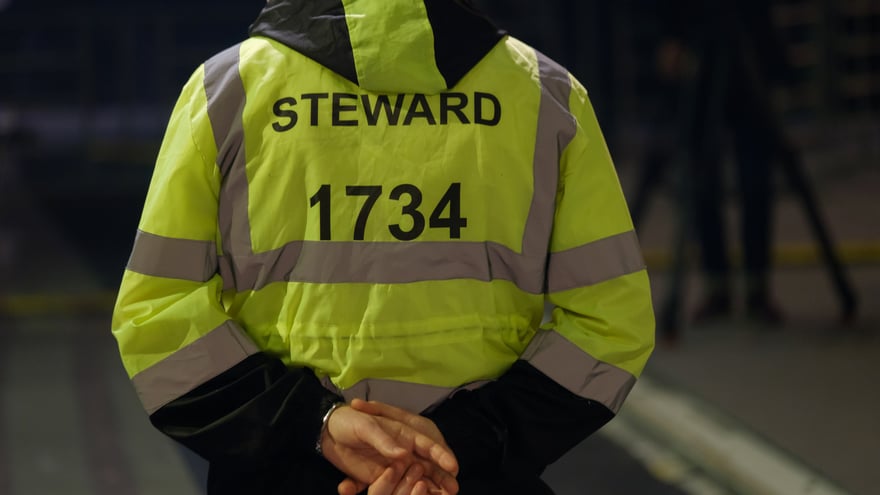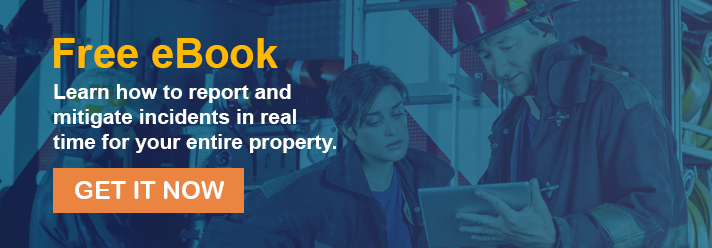You are the steward of safety at your property.
Take a step back and ponder this responsibility, and then take a deep breath – because it’s big.
The safety of your customers, colleagues, boss, and every person who enters your property rests on your shoulders.
You’re constantly taking in overwhelming amounts of information.
From “do this” to “do that,” you’re always faced with supplemental training in response to new policies or changes in industry policy.
Then, you’re tasked to train and monitor your team.
Are they doing everything they need or could be doing?
Do you sometimes feel like you have zero control over your operation?
How do you keep up?
How do you know what the best practices should be for your property?
PREVENTION IS YOUR PRIORITY
It takes effort on the part of you and your team.
What’s the sum of your efforts?
It’s Prevention.
It’s the only way to reduce your stress and enhance the customer experience.
You don’t want to increase incidents or response times or increase your overall liability.
You want the confidence that when your team has an incident to handle, they’re handling it correctly.
You want peace of mind; therefore, alleviating the potentials for hazard or liability needs to be at the center of your operation.
A FORMULA FOR SAFETY AT YOUR PROPERTY
Rather than simply brushing the surface of what prevention is, we’d like to get laser-focused and give you immediate takeaways.
After you read this article, you can put them into action.
The three P’s are a formula, and the sum – and final P – is Prevention.
Prevention is the secret to being a successful steward of safety.
Here’s the formula: Proactivity + Protocols = Prevention leading to safety at your property.
The formula produces results we can’t argue.
MAKE EFFECTIVENESS A PROACTIVE CHOICE
A proactive leader acts in anticipation of future problems, needs, or changes for their operation.
Become proactive by creating protocols inclusive of communication methods and protocols your team will use to provide your customers with a memorable experience.
Now you’re showing your team what it is to be a steward of safety and why it’s important to be proactive.
Here’s how.
Your leadership and training provide your staff with the ability to see and fully understand potential hazards.
Most importantly, they can execute effectively to mitigate incidents when they occur.
You don’t have to micro-manage any of the steps while the incident is being handled.
It’s a professional level of safety execution.
FIVE PROTOCOLS YOU SHOULD PUT INTO ACTION NOW
Don’t know what you’re looking for or need some tips? Check out this insight:
- The process starts before customers even enter the property. Identify potential hazards associated with your property. Do you have broken cup holders? Are stairwells or concourses damaged? Make sure your seats and all furniture are up to par.
- Locate wet spills or puddles to be handled immediately. For those of you running events where low temperatures are a factor, be on the lookout for ice.
- Once customers arrive, you’re live. As soon as customers enter the property, make your presence known. They must know your security team is proactive, available, and able to respond at a moment’s notice. It will give you and your team control if the crowd shifts to a new location. For sporting events, an example would be when customers move from the parking lots to the queue to get into the stadium and then into the stadium for a match.
- Train your team to approach potential unruly fans (i.e., sports fans with opposing team jerseys). Have your staff introduce themselves. Tell customers they’re available if they need assistance. Your team can focus your customers’ attention on your property’s text messaging software signage. A protocol such as this will deter potential unruly customers by making your presence well known.
- Identify potential hazard locations or hot spots and deploy your Rapid Response Team, Incident Response Team, or “Hot Team” to these locations. Using analytics will provide you with the data and insight you need to identify these areas.
There’s nothing more powerful than seeing facts.
Do you know what’s really going on at your property?
Track and use your analytics to see how effective the team is.
Analytics is the only way you’ll know how successful your efforts truly are.
Track the response times and amount of incidents occurring during your events.
Use analytics to drill and conduct tabletop exercises with your team on the likeliness of wet spills in specific locations or how to respond to lighting approaching your property.
FOLLOWING PROTOCOLS PRODUCES PREVENTION
It’s like we said.
Being proactive starts with you but is accessible on all levels.
Develop the protocols and let the prevention begin.
Training is the basis of your stewardship.
Educate your staff of all the potential hazards to enhance their awareness of hot spots and triggers for hazards or incidents that might surface throughout your property.
Have them report incidents and how they’re handled into your incident management system.
That way, your team is held accountable, incidents are communicated, and all information is measurable.
Don’t skip that step.
Don’t stop there.
You've developed protocols for staff to identify, handle, and mitigate incidents.
Now walk through the scenarios.
Tabletop exercises get the brain working, your team motivated, and creates an environment with long-term benefits for active training.
OVER TO YOU
Proactively manage your team and property, institute protocols with purpose, and prevent potential hazards from occurring.
Proactive management and purposeful protocols result in prevention that leads to increase safety, pleased customers who will return to your property, and less liability.
What are the fruits of your labor? Happy and safe customers.
Now that you know the secret to be an effective steward of safety, how will you execute this formula within your operation?
Editor's note: This post was originally published in January 2015 and has been updated for comprehensiveness and freshness.




